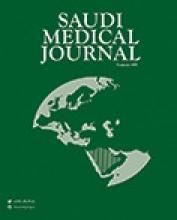Abstract
OBJECTIVE: To study the biological characteristics and resistant mechanisms of the cisplatin-resistant human hepatocellular carcinoma HCC cell line.
METHODS: The study took place in the Department of Pharmacology, Chongqing Medical University, Chongqing, China, between April 2005 and November 2007. A resistant HCC cell line QGY/CDDP was established by stepwise increasing cisplatin CDDP concentration and intermittent administration. Drug-chemo sensitivity was detected by 3-4,5-dimethylthiazol-2yl-2,5- diphenyltetrazolium bromide MTT assay. Cell doubling time was determined by cell counting, and cell cycle analysis was performed by flow cytometric FCM assay. Intracellular platinum accumulation was detected by atomic absorption spectrometry and the expression of P-glycoprotein P-gp and glutathione S-transferase-pi GST-pi were analyzed by FCM assay.
RESULTS: QGY/CDDP cell line was established after 3 months with stable resistance to CDDP and exhibited cross-resistance to many other chemotherapeutic agents. Compared with parental cell line, cell doubling time of QGY/CDDP prolonged; and the cell proportion decreased in S and G2/M-phase and increased in G0/G1-phase. In QGY/CDDP cells, intracellular platinum accumulation decreased and GST-pi expression increased, but P-gp expression kept stable.
CONCLUSION: QGY/CDDP cell line shows the typical and stable resistant phenotype and characteristics of resistant cells. Its mechanisms of resistance to CDDP may be mediated by reduced accumulation of intracellular platinum and higher GST-pi expression, but it is not associated with P-gp expression.
- Copyright: © Saudi Medical Journal
This is an open-access article distributed under the terms of the Creative Commons Attribution-Noncommercial-Share Alike 3.0 Unported, which permits unrestricted use, distribution, and reproduction in any medium, provided the original work is properly cited.






